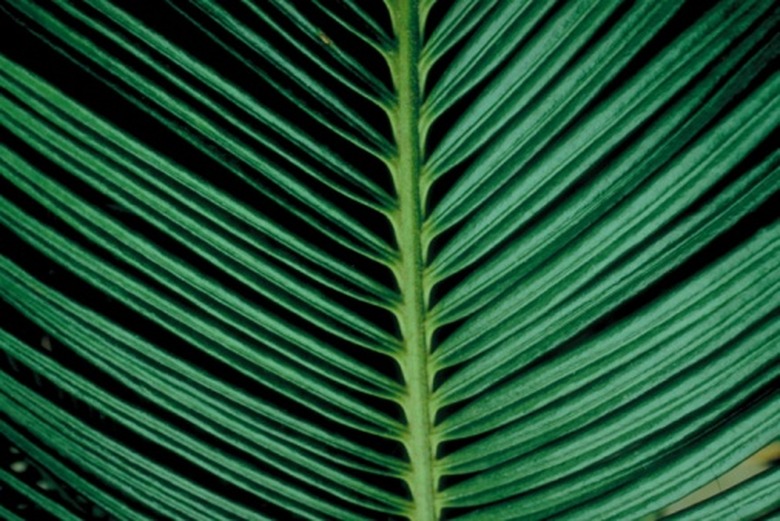White Spots On Palm Leaves
We may receive a commission on purchases made from links.
The leaves of palms (Arecaceae family) can sustain blemishes of many different colors. Some point to nutritional deficiencies, whereas others signal the presence of a viral or fungal infection. White spots on palm leaves are relatively rare and have three main causes: scale insect infestations, a natural substance called scurf or a benign fungal infection.
Scale Insect Infestation
Scale Insect Infestation
The most likely cause of white spots or streaks on palm leaves is a type of tiny, flat insect known as "scale." There are many different species that go by this name, but young adult forms are often white, generally protected by a hard armorlike covering on top of them. They suck water and nutrients directly from the plant leaves. This causes the leaves to turn brown, and the palm will eventually die if the infestation is not addressed.
Aside from white spots on the palm leaves, you can also diagnose a scale infestation if the leaves feel sticky. This "honeydew" is the insect's excrement. You may see a trail of ants on the leaves as well; they harvest the honeydew but don't pose a significant threat to the palm.
Small infestations can be removed by hand. Products that effectively control scale insects include pyrethrin-based insecticides, horticulture oil sprays and insecticidal soap. You should spray these on the plant's leaves as soon as scale insects are observed. Exercise caution when using insecticidal soap, because many palms are sensitive to soaps and may be damaged by their use.
Scurf on Pygmy Date Palms
Scurf on Pygmy Date Palms
Pygmy date palms (Phoenix roebelenii, USDA zones 10-11) naturally develop waxy white spots on their young leaves. It's called "scurf" and looks a lot like a scale infestation at first glance. This physiology is unique to pygmy date palms, so you can typically rule out a scale insect infestation if you know you're looking at this type of palm.
If you're not sure what kind of palm you have, you can examine the white spots under a magnifying glass to determine if they're insects or flakes of plant tissue. Another clue pointing toward scurf instead of a scale insect infestation is an absence of white spots on the older leaves. Another option is to use a dichotomous key to identify your palm based on its other physical features.
Graphiola Leaf Spot
Graphiola Leaf Spot
Graphiola leaf spot is a fungal disease that many palms can tolerate without any adverse effects. First, tiny raised black spots appear on either side of the leaves. These black spots then erupt with white filaments, which help disperse the fungal spores.
The older, lower palm leaves are affected first, and these should be removed only if the plant is otherwise healthy. The fungus doesn't cause brown or yellow spots on older leaves; this is usually a sign of a potassium deficiency. In this case, it's crucial to leave the foliage on the plant until the deficiency is remedied.
Because graphiola leaf spot rarely deteriorates the palm's health and reduces longevity, it's often ignored. A few studies have explored the use of fungicide as a preventative against graphiola leaf spot, but no products have been found to eliminate the black spots already present on the leaves.
